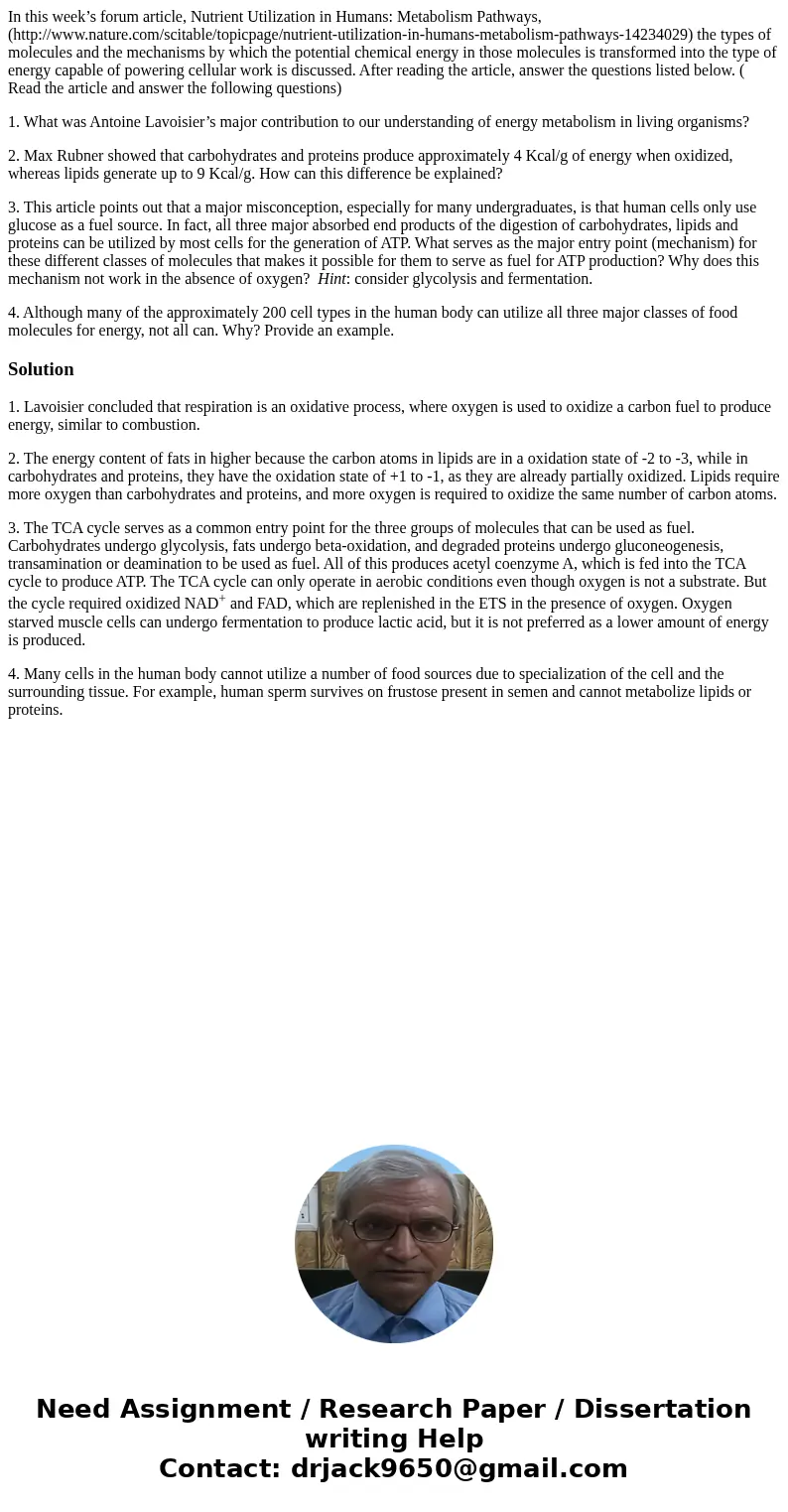In this weeks forum article Nutrient Utilization in Humans M
In this week’s forum article, Nutrient Utilization in Humans: Metabolism Pathways,(http://www.nature.com/scitable/topicpage/nutrient-utilization-in-humans-metabolism-pathways-14234029) the types of molecules and the mechanisms by which the potential chemical energy in those molecules is transformed into the type of energy capable of powering cellular work is discussed. After reading the article, answer the questions listed below. ( Read the article and answer the following questions)
1. What was Antoine Lavoisier’s major contribution to our understanding of energy metabolism in living organisms?
2. Max Rubner showed that carbohydrates and proteins produce approximately 4 Kcal/g of energy when oxidized, whereas lipids generate up to 9 Kcal/g. How can this difference be explained?
3. This article points out that a major misconception, especially for many undergraduates, is that human cells only use glucose as a fuel source. In fact, all three major absorbed end products of the digestion of carbohydrates, lipids and proteins can be utilized by most cells for the generation of ATP. What serves as the major entry point (mechanism) for these different classes of molecules that makes it possible for them to serve as fuel for ATP production? Why does this mechanism not work in the absence of oxygen? Hint: consider glycolysis and fermentation.
4. Although many of the approximately 200 cell types in the human body can utilize all three major classes of food molecules for energy, not all can. Why? Provide an example.
Solution
1. Lavoisier concluded that respiration is an oxidative process, where oxygen is used to oxidize a carbon fuel to produce energy, similar to combustion.
2. The energy content of fats in higher because the carbon atoms in lipids are in a oxidation state of -2 to -3, while in carbohydrates and proteins, they have the oxidation state of +1 to -1, as they are already partially oxidized. Lipids require more oxygen than carbohydrates and proteins, and more oxygen is required to oxidize the same number of carbon atoms.
3. The TCA cycle serves as a common entry point for the three groups of molecules that can be used as fuel. Carbohydrates undergo glycolysis, fats undergo beta-oxidation, and degraded proteins undergo gluconeogenesis, transamination or deamination to be used as fuel. All of this produces acetyl coenzyme A, which is fed into the TCA cycle to produce ATP. The TCA cycle can only operate in aerobic conditions even though oxygen is not a substrate. But the cycle required oxidized NAD+ and FAD, which are replenished in the ETS in the presence of oxygen. Oxygen starved muscle cells can undergo fermentation to produce lactic acid, but it is not preferred as a lower amount of energy is produced.
4. Many cells in the human body cannot utilize a number of food sources due to specialization of the cell and the surrounding tissue. For example, human sperm survives on frustose present in semen and cannot metabolize lipids or proteins.

 Homework Sourse
Homework Sourse